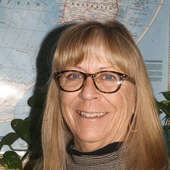- Research tips and McCook Brick Company- solid as a brick (12/16/24)
- Big Give appreciation and some railroad characters (11/15/24)
- George Randel becomes a landowner, gets married, and takes in a Buffalo Bill show (9/20/24)
- The memoirs of George F. Randel, early settler of Red Willow County (9/12/24)
- Vietnam War Memorial honors Nebraskans who served (6/13/24)
- McCook business promotions - just prior to 1893 stock market crash (5/30/24)
- Shall we dance? Meet you at the Gayway (12/8/23)
How McCook streets were first named
Friday, September 2, 2016

The sweetcorn is now in the freezer and I am beginning to feel as if I have accomplished something. Peaches are next and I expect that tomatoes and salsa will follow shortly though if the cicadas are to be believed, my tomato season will be cut short long before I want it to! In my book, there is no better sandwich than fresh tomatoes on toast with liberal salt and pepper and the season I get to enjoy that in is way too short for me.
Included in the 1886 McCook Business Directory by Ryan and Turner is a map of McCook. The map, which I would love to have an original of (our library issue is a copy) shows exactly 12 points of interest: Railroad Roundhouse, Railroad Depot, Post Office, U.S. Land Office, Public School Building, Methodist Episcopal Church, Catholic Church, Congregational Church, City Waterworks Engine House, River Bridge, Driving Park (referenced in last weeks' column), and the City Park (Norris Park or Water Works Park).
When our original city planners named the streets they actually did have a plan. North/south streets began with "M" so starting at Main and going east you found Marshall, Madison, Monroe, Monmouth, Melvin and going west came Manchester, McFarland, McDowell plus Manitoba, Minnesota, Maryland, Michigan, Missouri and Mississippi. East/west streets were "D"s with the exception of Railway which is currently A Street, followed by Dennison, Dodge, Douglass, Dearborn, Dakota, Dolan, Dudley, Denver, Dover and Donevan. Of the 12 points of interest, only two remain in any original form to the period and those are the City Park and the small portion of the roundhouse left standing.
As to the City Park, the Lincoln Land Company, local agent, Thomas Colfer, is who we have to thank for Norris Park. The original design was the created by the Crete Nursery which was hired by the land company to "lay out said park into walks, and to beautify and adorn the same with several varieties of ornamental trees and grasses, and in a word transform it into 'a thing of beauty and a joy forever.'" (I think they certainly achieved this goal!)
McCook boasted three newspapers in 1886, The McCook Tribune, McCook Democrat and McCook Trumpet. The Tribune's managing editor, F.M. Kimmel is described as having "the ability and nerve to run an independent journal and in dealing with vice and immorality, he wields a trenchant pen." On the other side, the weekly Democrat was created when "Messrs. Thompson & Wahlquist sent forth the first issue of the Democrat, the members of the dominant political party" to fill a void of no distinctly democratic newspaper in McCook. Jumping in between the two was the Trumpet, Messrs. A. L. Davis and J. P. Israel, who provided a paper "independent in politics".
The first organization for the Catholic Church took place in the fall of 1882 when Father, A. J. Fanning of Illinois was visiting Nebraska. Father Fanning took charge of the church affairs for about two years and was followed by Rev. James Cleary of Orleans who was assisted by Rev. P. Brophy and then Rev. Thomas Cullen who was in charge in 1886. Services were originally held in the Menard's Opera Hall but in 1884 lots were purchased and by May of 1885 the foundation for the church, 32 feet x 62 feet, was begun. J. R. Phelan, Thomas Colfer, William Fruin and John Farley served on the building committee.
While the Methodist Episcopal Church was perhaps the oldest congregation in McCook, having been formed in 1881 by Rev. Allen Bartley at a meeting in the Fairview school house, it was the Congregational Church that erected the first building, a church 30 feet x 50 feet, in the fall of 1882 after Rev. George Dugan took charge of this group.
Due to Labor Day, SWNGS next meeting will be Sept. 10, 110 West C, Suite M-3, 1:30 p.m.

